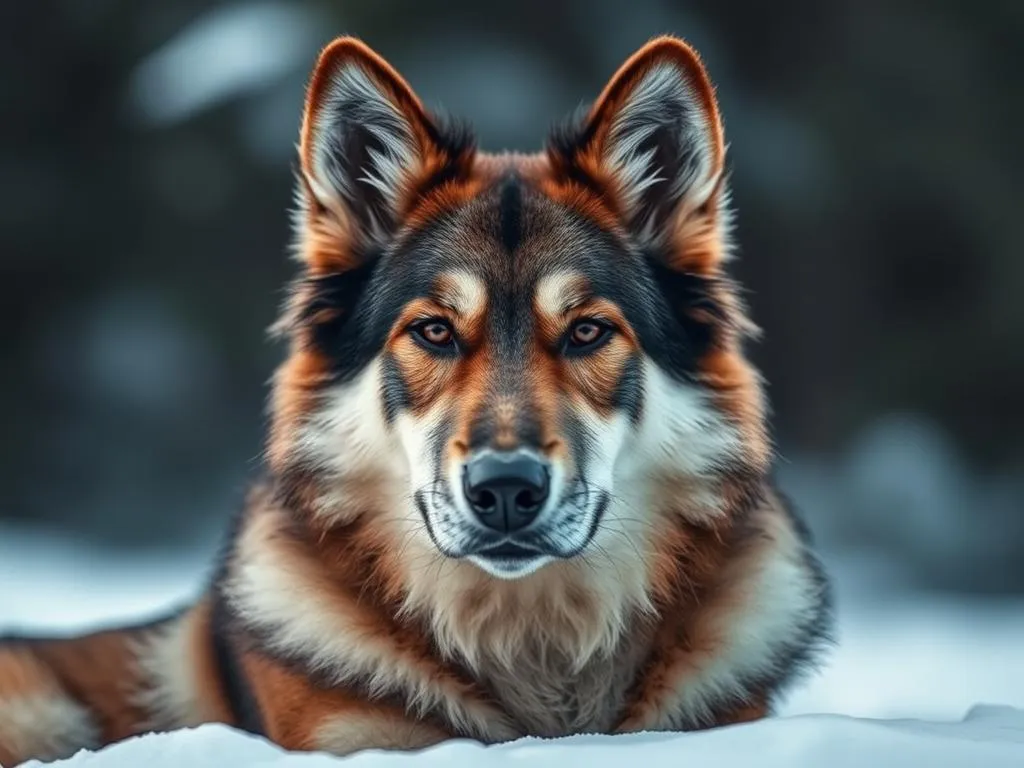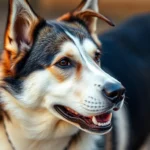
Introduction
Dog breeds play an essential role in our lives, providing companionship, protection, and joy. Each breed has its unique traits, making it crucial for potential owners to understand the characteristics and needs of different types of dogs. One breed that has garnered attention for its striking appearance and friendly demeanor is the Tamaskan Dog. Known for its wolf-like look and sociable nature, this breed is becoming increasingly popular among dog enthusiasts.
Understanding the Tamaskan Dog not only highlights its uniqueness but also emphasizes the importance of choosing the right dog breed for your lifestyle. This article will explore various dog breeds, with a particular focus on the Tamaskan Dog—its history, characteristics, care, training, health considerations, and much more.
Understanding Dog Breeds
Definition of Dog Breeds
A dog breed is a specific group of domestic dogs that share common traits, such as physical appearance, temperament, and behavior. These breeds are recognized by various kennel clubs and organizations, which set breed standards that serve as guidelines for breeders and owners. Understanding these standards helps in appreciating the diversity among dog breeds and choosing a suitable breed that fits one’s lifestyle.
Categories of Dog Breeds
Dog breeds can be categorized into different groups based on their characteristics and the roles they were bred for. Here are some primary categories:
- Working Group: Includes breeds like the Rottweiler and Siberian Husky, known for their strength and ability to perform tasks.
- Herding Group: Breeds like the Border Collie and Australian Shepherd, originally bred to herd livestock.
- Sporting Group: Energetic breeds such as Labrador Retrievers and Golden Retrievers, often used in hunting and field trials.
- Hound Group: Breeds like Beagles and Bloodhounds, known for their keen sense of smell and tracking abilities.
- Toy Group: Small and affectionate breeds such as Chihuahuas and Pugs, ideal for companionship.
- Non-Sporting Group: Varied breeds like Bulldogs and Dalmatians that don’t fit into other categories.
- Terrier Group: Feisty breeds like the Jack Russell Terrier, known for their hunting abilities and spirited nature.
- Miscellaneous Group: Breeds that are still being recognized and do not fit into the other categories.
The Tamaskan Dog: An Overview
History and Origin
The Tamaskan Dog is a relatively new breed, developed in the late 20th century in Finland. The aim was to create a breed that resembled wolves while retaining the friendly and loyal nature of domestic dogs. The breed was developed using a combination of several breeds, including the Alaskan Malamute, Siberian Husky, and German Shepherd. This blend contributes to the Tamaskan Dog’s striking appearance and diverse skill set.
Physical Characteristics
The Tamaskan Dog is known for its impressive physical traits:
- Size and Weight: Adult Tamaskan Dogs typically weigh between 50 to 120 pounds and stand about 24 to 30 inches tall at the shoulder, depending on their lineage.
- Coat Color and Texture: Their coats can vary in color, including shades of gray, black, and red. The fur is dense and medium-length, providing insulation and a wolf-like appearance.
- Distinctive Features: One of the most notable characteristics is their wolf-like face, erect ears, and bushy tail, which all contribute to their striking look.
Temperament and Behavior
The Tamaskan Dog is known for its friendly and sociable nature. Here are some notable traits:
- General Personality Traits: They are intelligent, loyal, and eager to please, making them excellent companions.
- Socialization Needs: Early socialization is crucial to ensure they grow into well-rounded adults. They thrive in social settings and enjoy the company of humans and other animals.
- Compatibility: Tamaskan Dogs are generally good with families and children. Their playful demeanor makes them a great addition to households with other pets, although supervision is advised during playtime.
Care and Maintenance of the Tamaskan Dog
Grooming Requirements
Grooming a Tamaskan Dog is essential to maintain their beautiful coat and overall health:
- Shedding Patterns: They shed moderately throughout the year and heavily during seasonal changes. Regular brushing, at least once a week, helps manage shedding.
- Bathing and Brushing Tips: Bathing should be done as needed, generally every few months, unless they get particularly dirty. Using a high-quality dog shampoo will help maintain the coat’s health.
Exercise Needs
Tamaskan Dogs are active and energetic, requiring ample exercise to stay healthy and happy:
- Recommended Daily Exercise Routines: They need at least 60 to 90 minutes of exercise daily. Activities can include long walks, runs, and playtime in a secure area.
- Ideal Activities: They enjoy agility training, hiking, and even swimming, making them versatile companions for adventurous owners.
Nutrition and Diet
A balanced diet is crucial for the health of a Tamaskan Dog:
- Best Types of Dog Food: High-quality commercial dog foods formulated for large breeds are recommended. Look for options with real meat as the first ingredient.
- Importance of a Balanced Diet: Proper nutrition supports their energy levels and overall health, helping to prevent obesity and related health issues.
Training the Tamaskan Dog
Basic Training Techniques
Training is an essential aspect of raising a Tamaskan Dog:
- Importance of Early Training: Starting training at a young age helps instill good behavior and reinforces a bond between the dog and owner.
- Recommended Training Methods: Positive reinforcement techniques, such as treats and praise, are effective for this intelligent breed. Clicker training can also be an excellent method for teaching commands.
Socialization Skills
Socializing a Tamaskan Dog is vital for their development:
- How to Socialize a Tamaskan Dog: Introduce them to various environments, people, and other pets from a young age.
- Potential Challenges and Solutions: Some Tamaskan Dogs may be reserved or shy. Patience and gradual exposure can help them become more confident in social settings.
Advanced Training and Activities
Tamaskan Dogs have the potential to excel in various training activities:
- Potential for Agility, Obedience, and Other Dog Sports: They are agile and intelligent, making them suitable for agility courses and obedience competitions.
- Mental Stimulation Activities: Puzzle toys and interactive games can provide mental challenges, keeping them engaged and preventing boredom.
Health Considerations
Common Health Issues
While generally healthy, Tamaskan Dogs can be prone to certain health issues:
- Genetic Predispositions and Health Screenings: Regular health screenings for hip dysplasia and other genetic conditions are essential.
- Recommended Vet Visits and Vaccinations: Routine veterinary check-ups and vaccinations will help ensure your dog’s health and longevity.
Lifespan and Aging
The lifespan of a Tamaskan Dog typically ranges from 12 to 15 years:
- Average Lifespan of Tamaskan Dogs: With good care and a healthy lifestyle, many Tamaskan Dogs can live long, fulfilling lives.
- Care Considerations for Aging Dogs: As they age, they may require special diets, reduced exercise, and more frequent vet visits to monitor their health.
Choosing a Tamaskan Dog
Where to Find Tamaskan Dogs
When looking for a Tamaskan Dog, it’s essential to find a reputable source:
- Reputable Breeders vs. Adoption: Seek out breeders who follow ethical practices and can provide health screenings for their puppies. Alternatively, consider adoption from rescue organizations.
- What to Look for in a Breeder: Ensure they are knowledgeable about the breed, prioritize health, and are willing to answer your questions.
Cost of Owning a Tamaskan Dog
Owning a Tamaskan Dog involves various costs to consider:
- Initial Costs: The purchase or adoption fee for a Tamaskan Dog can range from $1,000 to $3,000, depending on the breeder’s reputation and the dog’s pedigree.
- Ongoing Costs: Budget for food, grooming, veterinary care, and other expenses, which can add up to several hundred dollars per month.
Factors to Consider Before Adoption
Before bringing a Tamaskan Dog into your home, evaluate your lifestyle:
- Lifestyle Compatibility: Ensure your daily routine allows for the exercise and socialization needs of a Tamaskan Dog.
- Long-Term Commitment and Responsibilities: Owning a dog is a long-term commitment that requires time, effort, and financial resources.
Conclusion
The Tamaskan Dog is a remarkable breed known for its unique traits and friendly nature. With proper care, training, and socialization, they can be wonderful companions for active families and individuals. However, potential owners must consider their lifestyle and commitment before adopting a dog. A Tamaskan Dog brings joy and companionship, and with responsible ownership, they can thrive in a loving environment.
FAQs
Common questions about the Tamaskan Dog:
-
Are Tamaskan Dogs hypoallergenic?
No, they are not hypoallergenic and may cause allergies in sensitive individuals. -
Do Tamaskan Dogs need a lot of grooming?
They require regular grooming, especially during shedding seasons. -
Can Tamaskan Dogs be left alone for long periods?
They thrive on companionship and may experience separation anxiety if left alone for too long. -
How do Tamaskan Dogs behave with children?
They are generally good with children but should always be supervised during playtime. -
Are Tamaskan Dogs good for first-time dog owners?
They require experienced handling due to their intelligence and energy levels, making them better suited for owners who can dedicate time to training and socialization.









